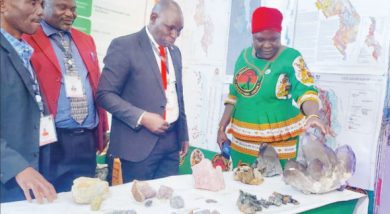Malawi inflation still highest in Sadc

Malawi’s annual inflation rate in the month of May, 2013 is the highest among all Southern Africa Development Community (Sadc) countries, a latest Sadc harmonised consumer price index (HCPI) has indicated.
This is the 13th month in a row that Malawi has continuously recorded the highest inflation rate among the Sadc member States, according to the Sadc firth issue released on Friday.
“The reported annual inflation rates for May 2013 for Member States indicate that Malawi once again registered the highest rate of 32.9 percent among the Sadc countries,” reads the report in part.
The annual inflation rate measures the price change between the current month (in this case the month of May, 2013) and the corresponding month of the previous year.
According to the report, Democratic Republic of Congo recorded the lowest rate of 1.5 percent.
As measured by the HCPI, the report says the annual inflation rate for the Sadc region was 6.9 percent in May, 2013.
The release of the Sadc report comes exactly a week after the National Statistical Office (NSO) said Malawi’s year-on-year headline inflation rate for the month of May 2013 decelerated to 31.0 percent from a rate of 35.8 percent in April thanks to the availability of cereals on the market and the downward adjustment in the price of fuel.
The Sadc report says compared to the region’s annual average inflation rate of 6.9 percent, nine countries recorded rates below the regional annual inflation rate for May 2013.
It says Malawi and four other countries registered rates higher than the regional average.
Annual rates for the rest of the other member states include Botswana (6.5 percent), Lesotho (6.9 percent), Madagascar (4.7 percent), Mauritius (4.6 percent), Mozambique (5.2 percent), Namibia (8.3 percent), Seychelles (5.3 percent), South Africa (6.3 percent), Swaziland (3.6 percent), Tanzania (9.0 percent), Zambia (8.5 percent) and Zimbabwe (4.8 percent).
The Sadc HCPI divisions used to calculate annual inflation include alcoholic beverages and Tobacco miscellaneous goods and services, housing, electricity, water, gas and other fuels, recreation and culture, transport, food and non alcoholic beverages, clothing and footwear, furnishings, household equipment and routine maintenance of house, communications, and restaurants and hotels.
During a joint press conference by the International Monetary Fund (IMF) and government last week in Lilongwe, Reserve Bank of Malawi (RBM) Governor Charles Chuka said at the moment, inflation still remains high but said the bank still remains confident that the rate will be contained.
Said Chuka: “Inflation is still high, but we see the deceleration continuing. Of course we are conscious that pressure still remains and we need a better sense of food situation and also money supply on the market.”
Finance Minister Ken Lipenga said when he presented the 2013/14 budget that although, the country’s inflation peaked at a high of 38 percent in February 2013, it was pleasing to note that inflation rate has started declining.
“Already by March 2013, headline inflation had started responding to our measures and eased to 36.4 percent, due to a tight fiscal and monetary stance implemented by the Government and new food harvests which had began to reach the markets,” said Lipenga.
The minister said considering the foregoing, inflation is expected to slow down to 14.2 percent by December 2013 and to 7.0 percent by December 2014 as the economy continues to recover.





